
Photo courtesy of www.sealtwo.org.
Every submariner’s fear is being trapped on the bottom of the ocean inside the steel coffin they live, work, and sleep in, knowing that help on the surface isn’t coming to save them.
For members of the USS Squalus, this fear became a reality on May 23, 1939, after a routine sea trial off the coast of Portsmouth, New Hampshire. While suffering catastrophic failure, the submarine plummeted to the bottom. No prior rescue had ever succeeded beyond 20 feet, and the Squalus was down 243 feet.
During the 39-hour ordeal, U.S. Navy divers challenged standard operating procedures (SOPs) previously written only in theory and not in blood during one of the finest efforts of heroism, grit, and survival in diving history.
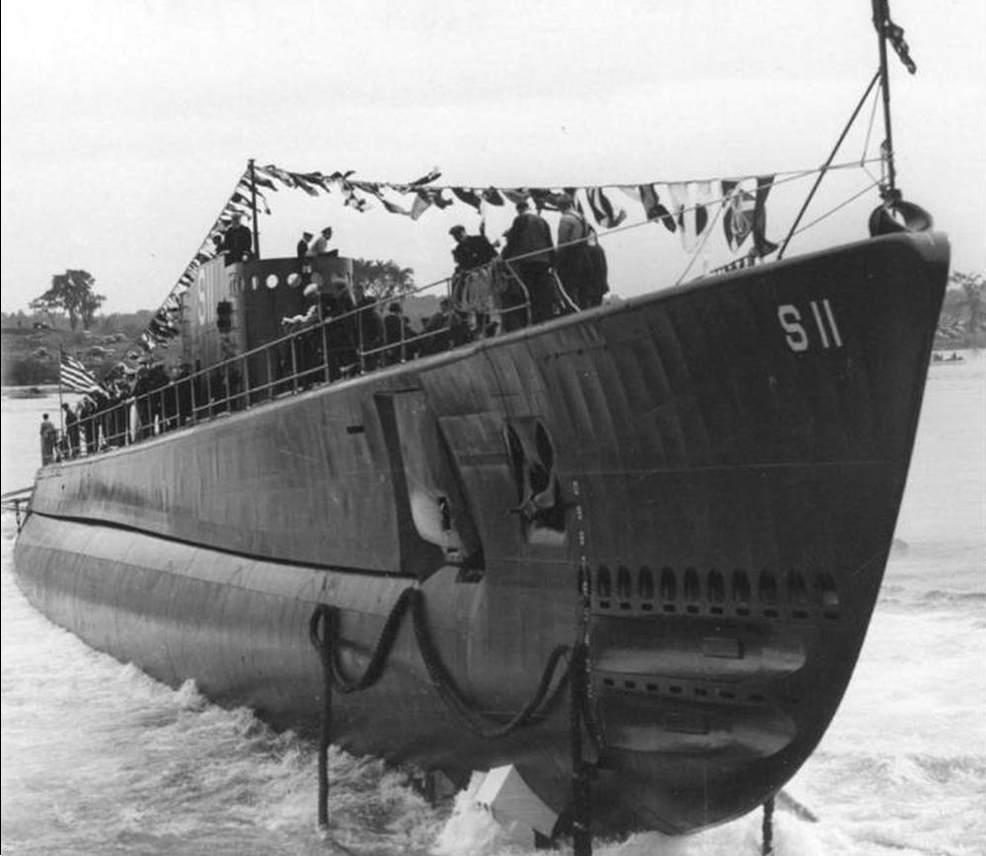
All Going According to Plan
Lieutenant Oliver F. Naquin, a graduate of Annapolis where he excelled as a trumpet player, was the lead skipper in charge of the USS Squalus (SS-192), a brand-new, $5 million, 300-foot-long diesel electric submarine commissioned on March 1, 1939. Two months into the new submarine’s service on the morning of May 23, everything was going according to plan for Naquin and his 58 crew members (four officers, 51 enlisted, three civilians). At 7:30 AM, a routine mission launched to patrol the Pisquataqa River near the Isle of Shoals, a small group of islands along the coast and between the states of New Hampshire and Maine.
At 8:40 AM, Naquin gave the order to dive, like so many times before, and disappeared below the brisk wind that whined against the Squalus’ steel body as the choppy waves splashed over her sail. Sixty-three feet into their descent, a crewman in the engine room urgently barked over the radio, “Take her up, the induction’s open!” as seawater sprayed throughout the cabin. The men worked in unison pulling levers to release tanks of compressed air to raise the sub while the remaining crew stood confused near the radio.
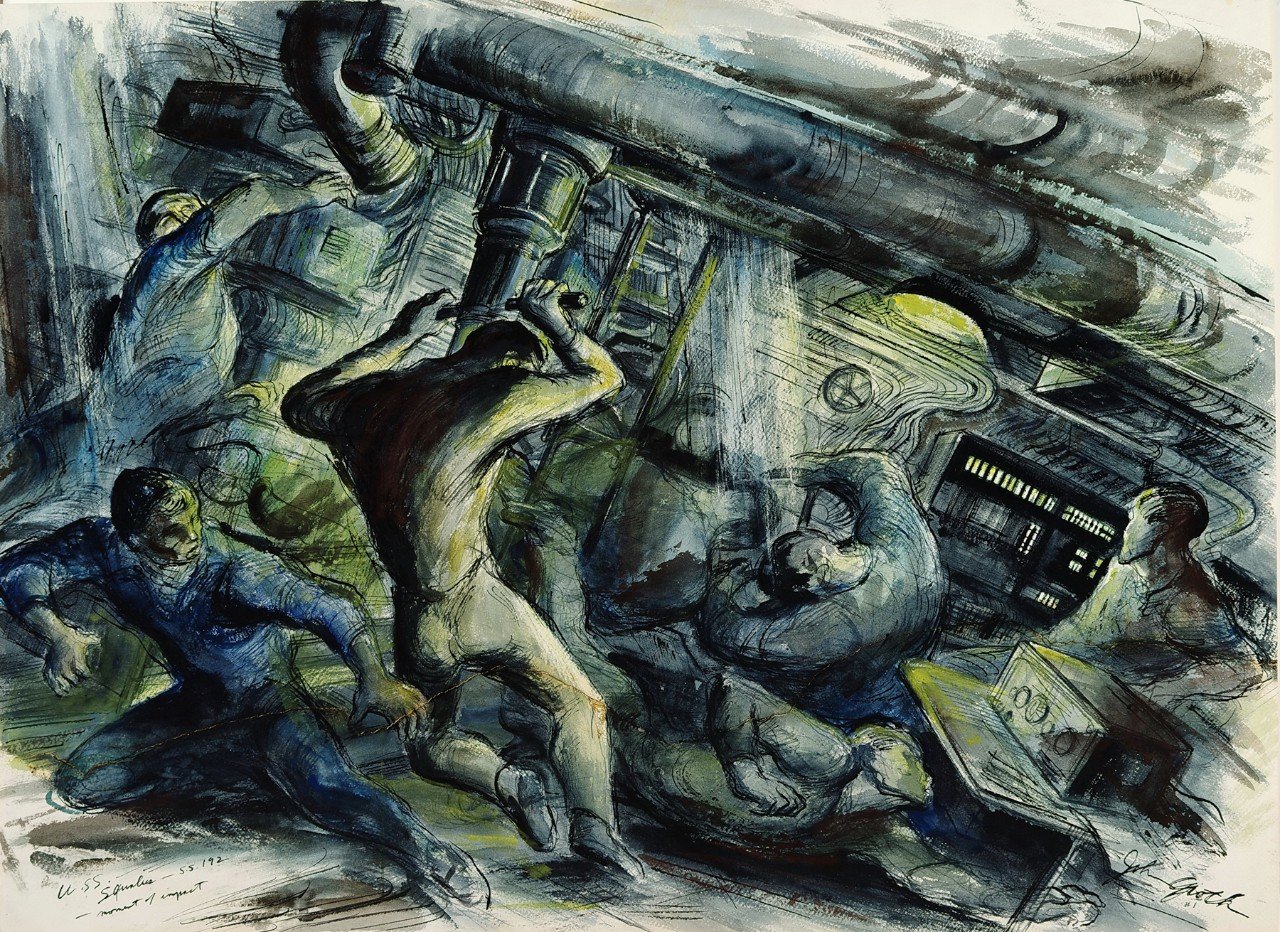
As the Squalus began to rise, the water pressure spiked and water burst from the ventilation pipes as if it were being shot from a firehose, flooding the compartments. The weight from the overflowing water arched the submarine into an angled but slow nosedive for the bottom. As the fight to maintain control of the deteriorating scenario increased, Chief Electrician’s Mate Lawrence Gainor noticed sea water showering the 6-foot-high batteries in one room as smoke rose to the ceiling. He got onto the floor armed with a flashlight and belly crawled in-between each of the batteries, switching off the circuits before they could explode. He escaped electrocution, but the lights went out and he had to make the trek back with limited visibility.
Naquin then ordered Electrician’s Mate Lloyd Maness to close the 300-pound steel door between the source of the water in the battery room and the operating compartment. Eight men swam, shimmied, and grasped through the tight confinements to safety before Maness’ muscles were too fatigued to keep the door from slamming shut. Not all of them made it out as four of the seven compartments filled with ice-cold salt water, but at the time, hope was the only thing they mustered in the ever-changing moments of disaster.
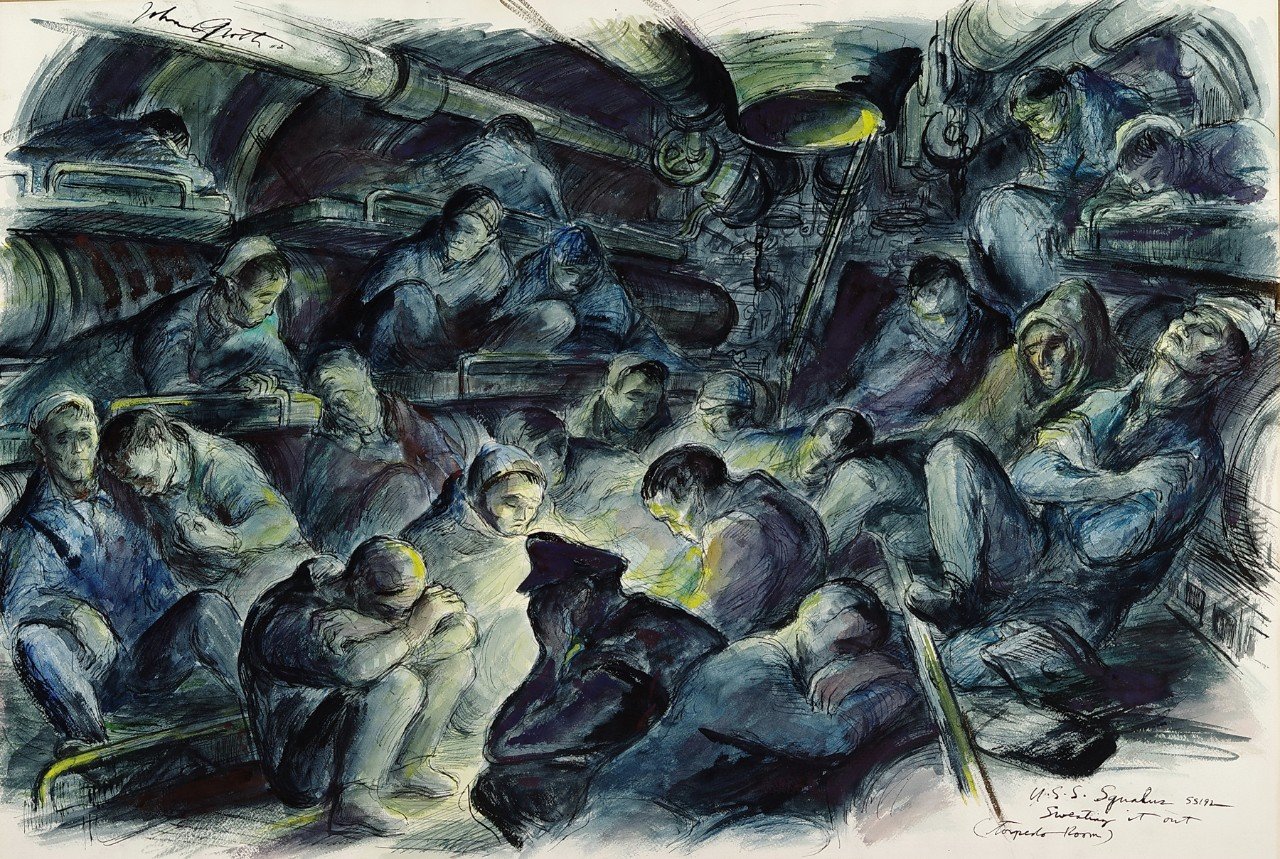
Move Heaven and Earth
After the Squalus missed its communication check-ins by an hour and several other attempts were made on the surface to contact them, the Squalus’ sister ship, USS Sculpin, was ordered to trace their patrol path. While the Sculpin taxied to their position, searching with its specialized equipment, the desperate submerged crew fired a red rocket from the signal ejector hourly so nearby vessels could assist. In addition, a telephone buoy was released and a message written in large letters read, “Submarine sunk here. Telephone inside.” They did everything to help mark their position, even shooting slugs of oil out of the toilet bowl as makeshift smoke bombs that rose to the top.
The situation was growing dire, but word of the USS Squalus’ entrapment had reached Lieutenant Commander Charles “Swede” Momsen of the Washington Navy Yard. During his tenure, he and naval bureaucracy never saw eye to eye, but like all great officers, he found a way to correct a previously uncorrectable problem. He innovated the Momsen Lung, one of the earliest underwater breathing devices to allow crewmembers and divers the ability to operate at extreme depths, rather than die in an encased tomb like the 18 subs in the decade prior. Momsen was determined to change that statistic as the lead submarine expert and head of the Experimental Diving Unit.
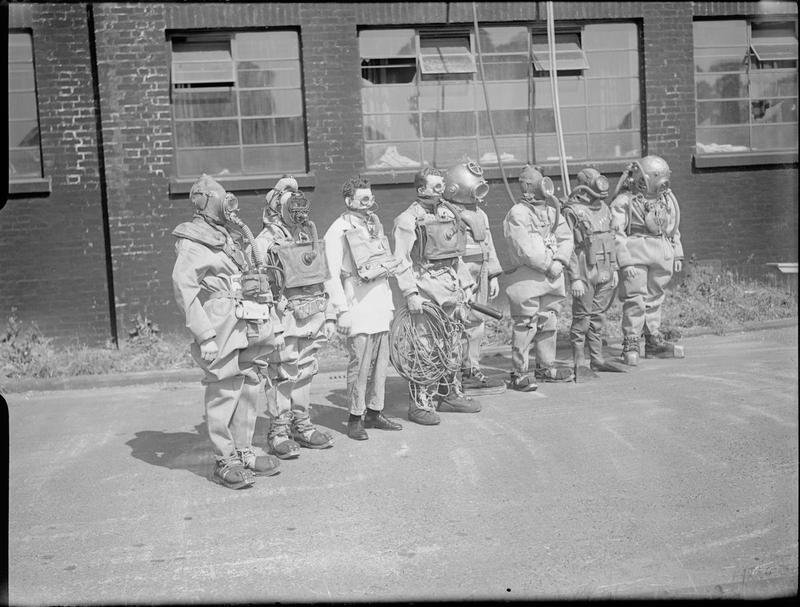
He boarded the next seaplane and arrived at the Piquata River later that evening, but as Murphy’s Law would have it, another team of hand-picked Navy divers flew into a ferocious lightning storm with a thick layer of fog that grounded their plane 125 miles south of Portsmouth. The team grabbed all their dive equipment, jammed into a convoy of cars escorted by local and state police, and scorched up the coast through blocked-off intersections and red lights. They were reportedly traveling so fast that the police escort couldn’t keep up as they passed Boston. They arrived at 4:15 AM the next morning and prepared to coordinate with other lifesaving assets on target.
Meanwhile, the USS Falcon, a 187-foot minesweeper loaded with Momsen’s latest invention, launched from its port 200 miles away in New London, Connecticut. Co-created with Commander Allen McCann, the McCann Rescue Chamber was a novel idea designed specifically to rescue sailors trapped in submarines, but it had yet to be tested beyond a controlled training environment.

The First Rescue of its Kind
While assets moved heaven and earth to their location, below the surface Naquin communicated by phone with the skipper aboard the Sculpin, providing updates and planning likely options for a rescue. Though the tensions were high, Naquin remained calm and poised, as evidenced from a transcript of communication: “Consider the best method to employ is to send divers down as soon as possible to close high induction and then hook on salvage lines to flooded compartments and free them of water in attempt to bring her up; for the present consider that preferable to sending personnel up with lungs.”
Communication was short, concise, and then ceased as a harsh wave raised the Sculpin, snapping the telephone line. Moving forward, the only way to communicate with the rescuers was through Morse Code tapped by hammer on the sub’s hull. Momsen took the lead when he arrived and thought raising the sub would be too dangerous, as weather conditions were unpredictable and offered limited visibility through the fog. He thought his dive bell could save more lives, but there was a caveat: they had to sacrifice precious time for the USS Falcon to arrive.
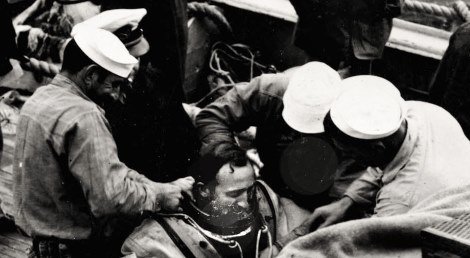
The heroic effort brought public intrigue. Throughout the night, updates were telegraphed around the world, and family members listened closely as their loved ones were short on air and had only hours to live. As the sun crept over the horizon, the Falcon pulled in. By 10:15 AM, Boatswain’s Mate Martin Sibitsky carefully checked the 240 pounds of gear strapped to his body and prepared to enter the water. His task was to attach a steel wire to the escape latch of the Squalus to prepare for the deployment of the dive bell. Adding to the confusion, however, since the buoy telephone line snapped, Sibitsky didn’t have the Squalus’ precise location, so he only had minutes to perform the job before feeling the effects of intense nitrogen narcosis from the water pressure.
Dr. Charles Wesley Shilling, the senior medical officer for the operation, wrote, “No one who has not been in a diving suit at sea or even under pressure in a diving tank at great depth has any idea how hard it is to do the simplest task. Not only is one very weak and awkward but one’s mind functions so slowly it is hard for the people topside, or outside the diving tank, to believe what they see.”
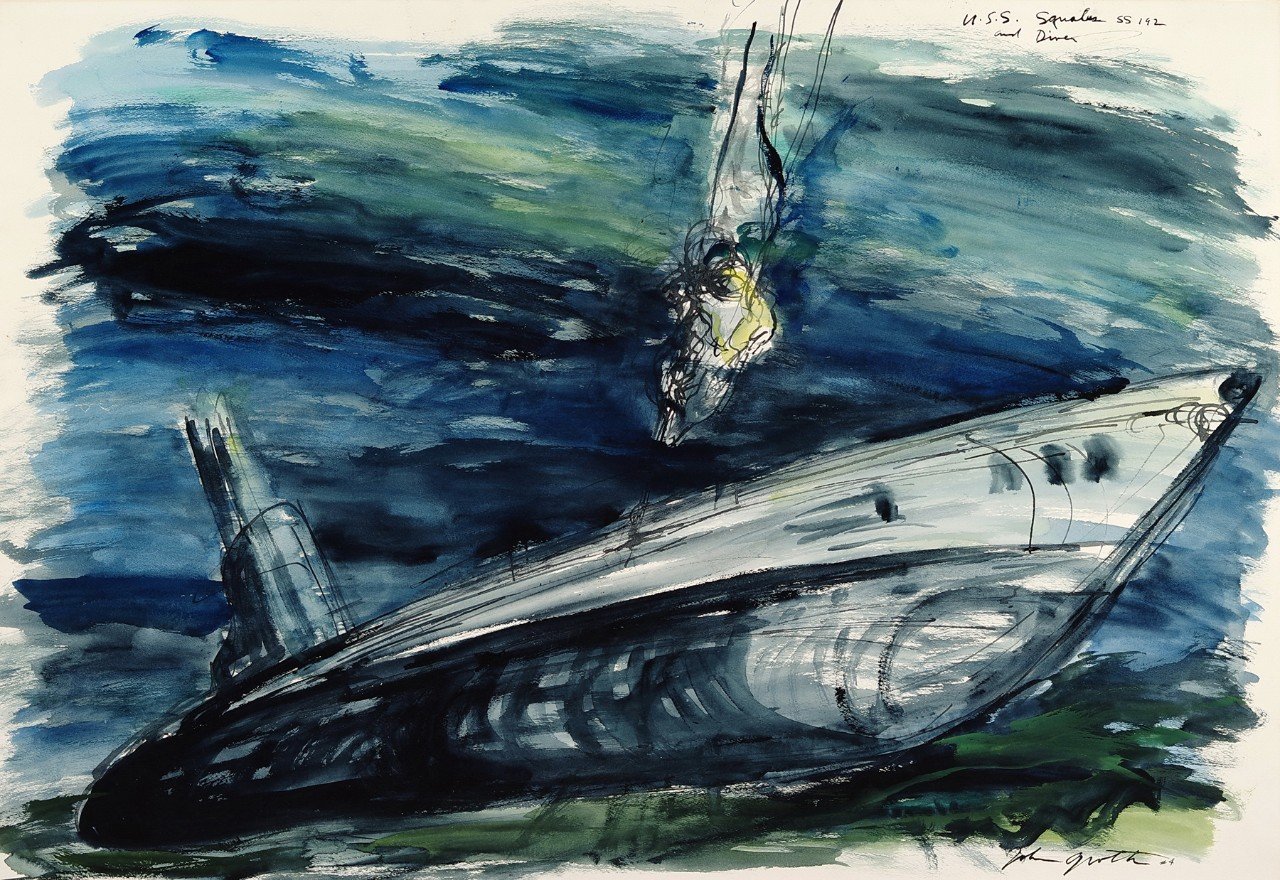
Where in the Hell are the Napkins?
Sibitsky made contact with the Squalus, and the 33 survivors cheered when they heard his lead boots clang outside. He did his job in the pitch dark without a hitch and safely returned to the surface. Some of the survivors’ previous Morse Code messages requested food, so at 11:30 AM, while Torpedoman’s Mate John Mihalowski and Gunner’s Mate Walter Harman entered the dive bell, they brought a surprise. Inside the 10-foot high by 7-foot wide, 21,600-pound chamber, the pair brought hot pea soup, sandwiches, milk, and extra blankets and flashlights.
As they leveled the dive bell’s buoyancy, they slowly slid down the line to the escape hatch, bolted down the chamber, and sealed it to the Squalus. When Mihalowski opened the hatch, he was greeted with the faces of the crew and quickly exchanged supplies. One of the survivors slurped his hot soup and jokingly remarked, “Where in the hell are the napkins?”
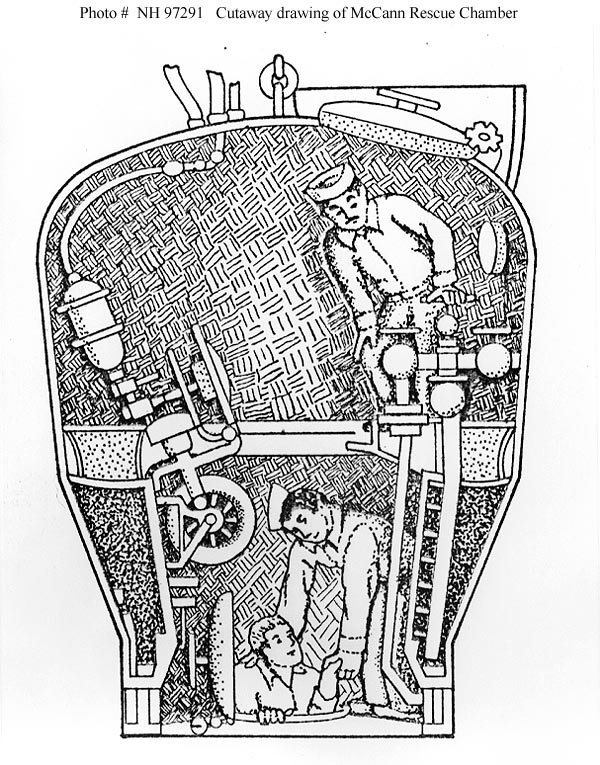
Weakest First
Naquin made the decision to send up the weakest survivors first. Every decision was thought out carefully, as the risk carried far too many unknowns. Momsen planned to make four trips, each lasting two hours per transport. He would first carry up seven survivors, then eight, and nine for the last two trips. But William Badders operated the dive bell more than anyone in training and knew the conditions were unfavorable. Up to that point, everything that could have gone wrong did, so he decided to carry more survivors each time to increase survivability. Momsen and Badders argued, but eventually he told Badders, “You brought out too many men on this trip, but do it again.”
The third trip included nine more survivors who were immediately checked by doctors, given warm clothes, and some even shared hugs from their awaiting loved ones on shore. The final rescue launched at 6:41 PM, and the first leg went business as usual. On its way up with the last of the crew, the dive bell stalled. The steel wire needed to be cut, and the only safe way to do it was to be lowered back down to level ground. Two divers struggled to remove it, but Chief Torpedoman Walter Squire partly succeeded, which sent the dive bell bouncing across the Squalus. Torpedo’s Mate Jesse Duncan was tasked with removing the half-broken wire completely but became entangled. Running out of air and delirious, he returned to the surface and a third diver went down to try to free the wire. He was unsuccessful.

As sailors usually do in a crisis, they made jokes. When they were stationary in the dive bell, their transmissions were broadcast to the entire team topside, and Mihalowski said, “Say Mac, tell them to send down a quart and we don’t care whether it’s a quart of soup, ice cream, coffee, or whiskey!”
Momsen believed adding a new wire to the dive bell was too arduous a task and changed the plan on the fly to tow the dive bell manually. Using ballast tanks equipped on the dive bell, the crew rose to the top in 30-second increments as they bobbed and shifted in the waves. When they reached the top, they were relieved to escape with their lives.
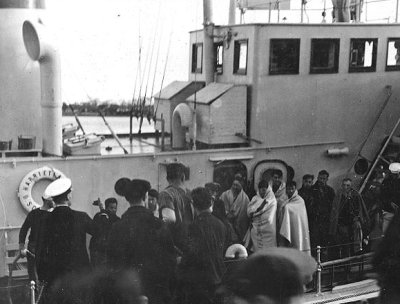
Salvaging the Squalus
After the heroic 39-hour operation, 33 crew members returned home. The salvaging of the Squalus took 113 days; it was raised using compressed air tanks on Sept. 13, 1939. Twenty-five bodies were discovered inside; another was never found and was assumed dead.
Eight months later, four Medals of Honor (William Badders, John Mihalowski, James McDonald, and Orson Crandall), 46 Navy Crosses, and one Distinguished Service Medal were awarded to both the rescuers and survivors. All the men vowed to return to submarines.
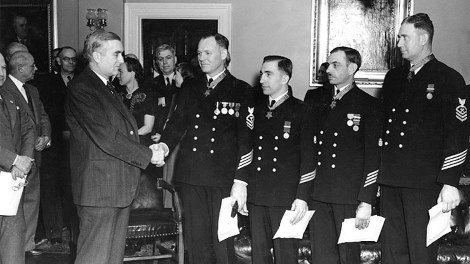
The Squalus was recommissioned, renamed the Sailfish, and returned to service. During World War II, it made 12 war patrols, earned nine battle stars, a Presidential Unit Citation, and sunk seven war ships.

Matt Fratus is a history staff writer for Coffee or Die. He prides himself on uncovering the most fascinating tales of history by sharing them through any means of engaging storytelling. He writes for his micro-blog @LateNightHistory on Instagram, where he shares the story behind the image. He is also the host of the Late Night History podcast. When not writing about history, Matt enjoys volunteering for One More Wave and rooting for Boston sports teams.
BRCC and Bad Moon Print Press team up for an exclusive, limited-edition T-shirt design!
BRCC partners with Team Room Design for an exclusive T-shirt release!
Thirty Seconds Out has partnered with BRCC for an exclusive shirt design invoking the God of Winter.
Lucas O'Hara of Grizzly Forge has teamed up with BRCC for a badass, exclusive Shirt Club T-shirt design featuring his most popular knife and tiomahawk.
Coffee or Die sits down with one of the graphic designers behind Black Rifle Coffee's signature look and vibe.
Biden will award the Medal of Honor to a Vietnam War Army helicopter pilot who risked his life to save a reconnaissance team from almost certain death.
Ever wonder how much Jack Mandaville would f*ck sh*t up if he went back in time? The American Revolution didn't even see him coming.
A nearly 200-year-old West Point time capsule that at first appeared to yield little more than dust contains hidden treasure, the US Military Academy said.













